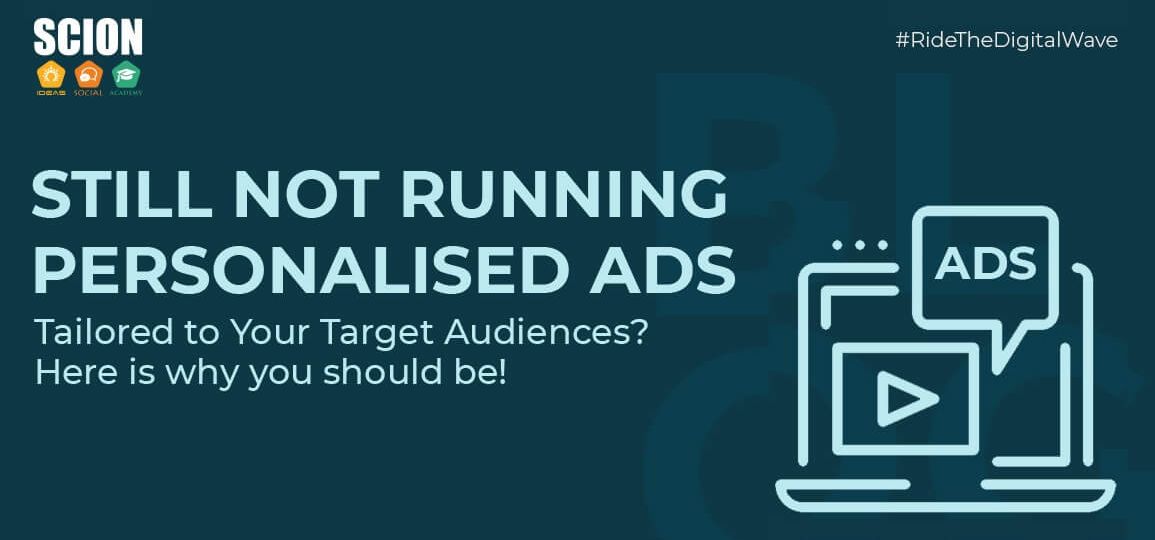
Imagine you had a personal assistant whose job was to simply follow you around as you visit shops and note down the items of your interest.
Then this assistant would keep reminding you about those items wherever you went!
They would show you pictures and say something like:
“Remember those shoes you liked?
“What about that new electric stove?”
“Oooh, that dress was nice, right?”
Would you like that? Would that be helpful for your business if you were selling those items?
If you ignore the asking questions part, then this service already exists. These are the personalized ads that you see online.
When advertisements are relevant, consumers can avoid the inconvenience of looking at irrelevant or even tasteless ads. They see info about their interests. In fact, studies have shown that customers actually prefer to see more personalized ads and are even ready to switch brands in favor of personalized communication.
What are Personalized Ads and How Do They Work
Suppose you visit a merchant website and look at a particular item – shoes, clothes, mobile device – but do not buy it immediately. The information that you were interested in that item gets stored in a small packet called “cookie” on your device.
This cookie now follows you around the internet and triggers ads about the items you were browsing previously but did not buy.
Research has shown that consumers repeatedly see the items of their interest, so they are more likely to buy them.
Marketers cast a wide net and bombard their message to an enormous volume of people possible. This “repeating the message” is the basis of all mass advertising. Do Super bowl ad campaigns ring a bell?
In the case of personalized ads, the message is tailored to the user as per their interest and is not generic.
How You Can Make Personalized Ads Work for You
For business owners with a digital presence, it’s good news! For users surfing the web, it’s good news as well.
At first, it may seem intrusive, but when used judiciously and concerning people’s privacy, personalized ads can actually offer a better experience to users. At the same time, they can be a more effective way for marketers to reach the right audience.
Using personalized ads is a way of retargeting your customer base. It means you reach those potential customers who are already interested in your product.
There has to be a method to your retargeting madness. Here are a few things you need to keep in mind while using personalized ads for retargeting:
Almost 70% of customers prefer personalized products over generic recommendations. If you can focus your ads on fulfilling the following criteria, you will derive more success in your retargeting through personalized ads effort:
- Ensure the products are relevant to customers’ interests
- Choose brands that the customer already patronizes
- Keep the brand story engaging through good story-telling or laughter
- Give enough product details for customers to make a decision
Subsequently, some common mistakes can adversely affect your brand’s reputation. Avoid the following popular wrong practices by marketers:
- Trying to cross-sell irrelevant things
- Pushing ads related to things customers may already own
- Getting basic information of customer information such as location
- Keeping the targeted ads active for an indefinite period that leads the customer to feel like a particular brand is stalking them
Consumer Behavior, Access to Consumer Data, and Privacy
Consumer behavior has indicated that they prefer personalized ads over generic, irrelevant ones.
Retargeting and other digital marketing activities cannot take place in a vacuum. You need relevant and accurate consumer data to design and deploy ads that work.
All the top social media platforms like LinkedIn, Twitter, Facebook, Instagram, and eCommerce websites like Amazon collect consumer data to develop accurate consumer profiles. Therefore, using their services to run personalized ads makes sense as their access to consumer behavior is deep and accurate.
This approach has also raised concerns about how Big Tech and other companies use consumer data.
Then there are questions like:
– In the sea of data, how do you find your customer base?
– How can you know which social media platform offers the best reach and has the audiences that are most relevant to you?
– Are you alienating your consumers by being too pushy with your ads?
Conclusion
Relevance has jumped from a ‘nice-to-have’ feature to something that’s a must-have.
With increasing concerns over consumers’ right to privacy, it has become all the more critical that consumer data is handled with care.
A correctly laid out retargeting strategy is the key to extracting the maximum value from personalized ads. Choosing the right digital partner to help you navigate the world of retargeting and not breaching consumer privacy is the right move in the current scenario.
Connect with us to know how we can help your retargeting efforts and design a personalized ad campaign. We have already helped more than 450 businesses across the globe achieve better ROI. Talk to us!
